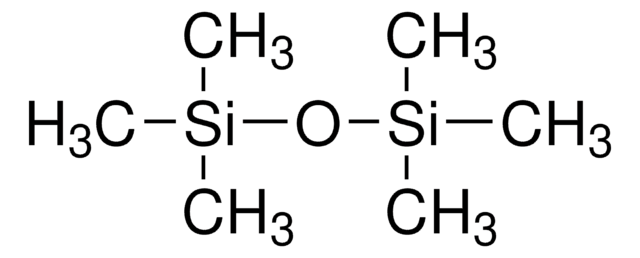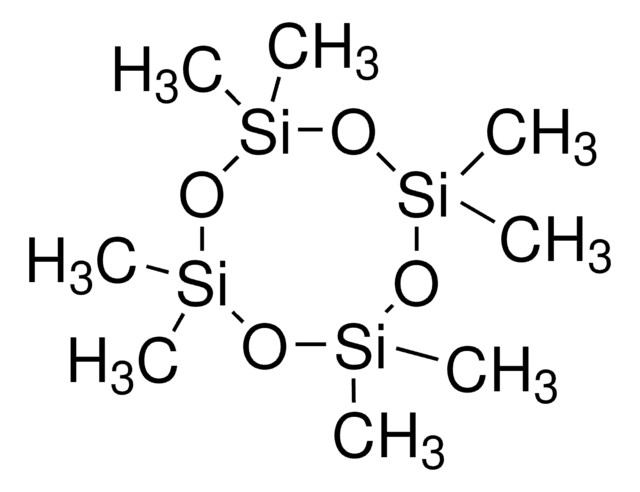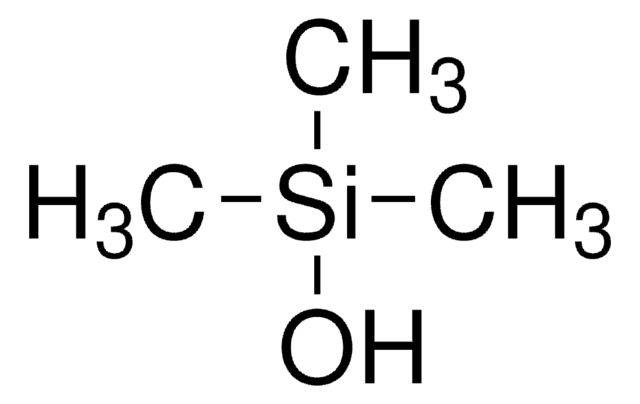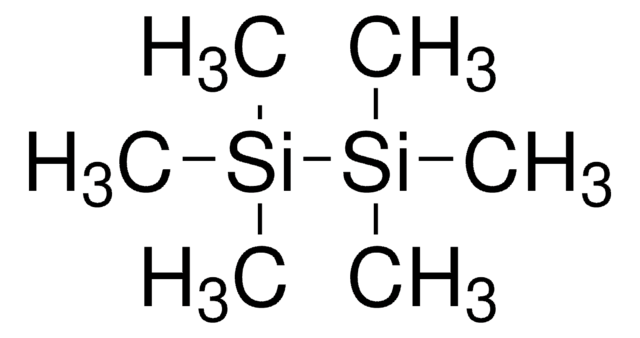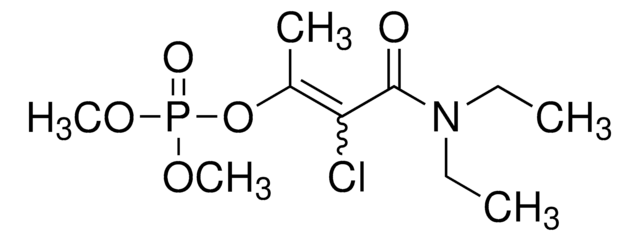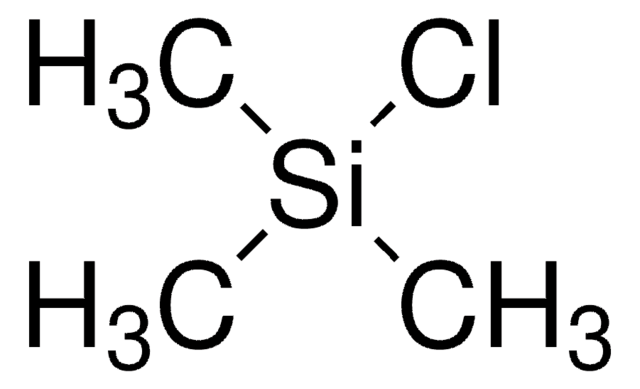8.14051
Hexamethyldisiloxane
for synthesis
Synonym(s):
Hexamethyldisiloxane, 2,2,4,4-Tetramethyl-3-oxa-2,4-disilapentane, HMDSO
About This Item
Recommended Products
vapor pressure
20 hPa ( 20 °C)
Quality Level
Assay
≥98.5% (GC)
form
liquid
autoignition temp.
340 °C
potency
>12160 mg/kg LD50, oral (Rat)
>2000 mg/kg LD50, skin (Rat)
expl. lim.
0.5-21.8 % (v/v)
bp
100 °C/1013 hPa
mp
-68 °C
transition temp
flash point 4 °C
solubility
insoluble 0.00037 g/L
density
0.76 g/cm3 at 25 °C
storage temp.
2-30°C
SMILES string
[Si](O[Si](C)(C)C)(C)(C)C
InChI
1S/C6H18OSi2/c1-8(2,3)7-9(4,5)6/h1-6H3
InChI key
UQEAIHBTYFGYIE-UHFFFAOYSA-N
Related Categories
Application
- Hexamethyldisiloxane coating by plasma to create a superhydrophobic surface for fabric masks: Research into the application of HMDSO plasma coatings to fabric masks to impart superhydrophobic properties, enhancing their resistance to moisture (Prado et al., 2022).
- PECVD of hexamethyldisiloxane coatings using extremely asymmetric capacitive RF discharge: Examines the deposition of HMDSO-based coatings via plasma-enhanced chemical vapor deposition, focusing on the influence of discharge asymmetry on the coating properties (Gosar et al., 2020).
- A ReaxFF-based molecular dynamics study of the pyrolysis mechanism of hexamethyldisiloxane: This study uses molecular dynamics to explore the pyrolysis processes of HMDSO, important for understanding its stability and decomposition under thermal stress (Chen et al., 2022).
- Thermal stability of hexamethyldisiloxane and octamethyltrisiloxane: Discusses the thermal stability of HMDSO compared to related siloxanes, providing valuable data for applications involving heat exposure (Keulen et al., 2018).
Analysis Note
Density (d 20 °C/ 4 °C): 0.762 - 0.764
Identity (IR): passes test
Signal Word
Danger
Hazard Statements
Precautionary Statements
Hazard Classifications
Aquatic Acute 1 - Aquatic Chronic 1 - Flam. Liq. 2
Storage Class Code
3 - Flammable liquids
WGK
WGK 2
Flash Point(F)
21.2 °F - closed cup
Flash Point(C)
-6 °C - closed cup
Certificates of Analysis (COA)
Search for Certificates of Analysis (COA) by entering the products Lot/Batch Number. Lot and Batch Numbers can be found on a product’s label following the words ‘Lot’ or ‘Batch’.
Already Own This Product?
Find documentation for the products that you have recently purchased in the Document Library.
Customers Also Viewed
Our team of scientists has experience in all areas of research including Life Science, Material Science, Chemical Synthesis, Chromatography, Analytical and many others.
Contact Technical Service